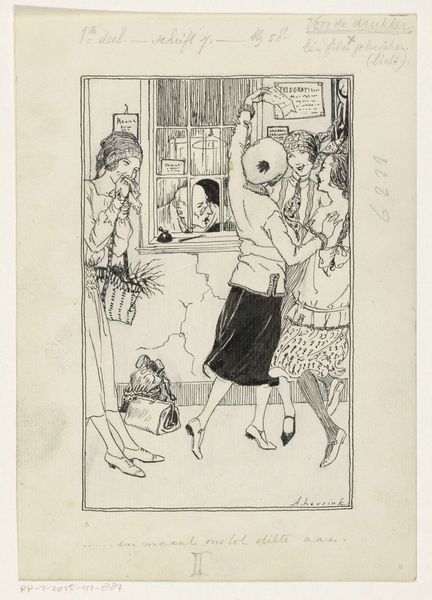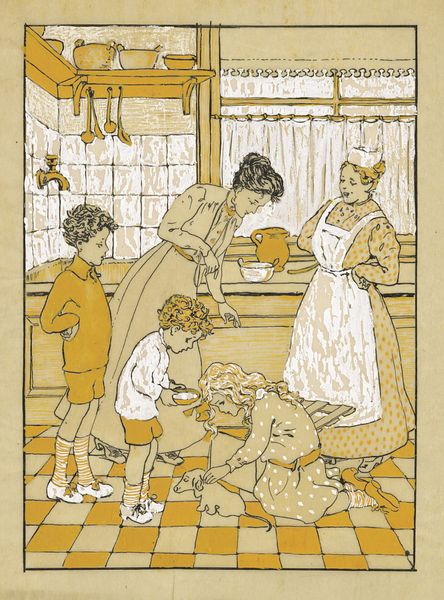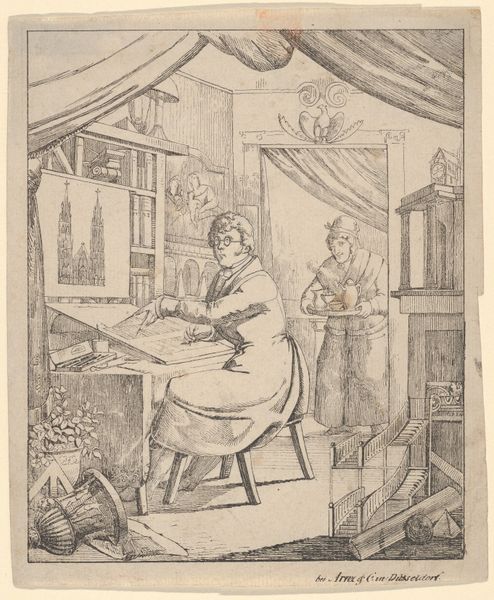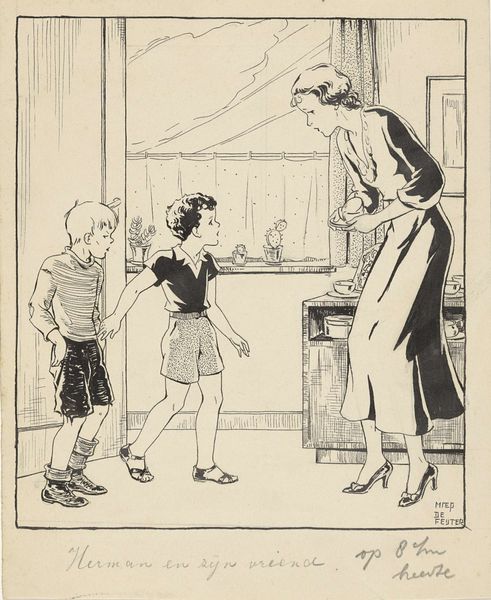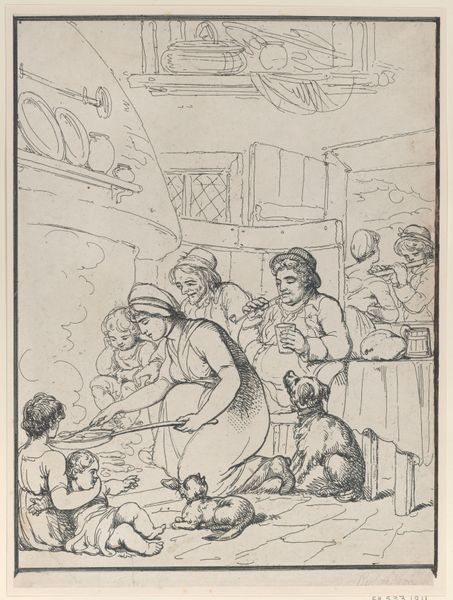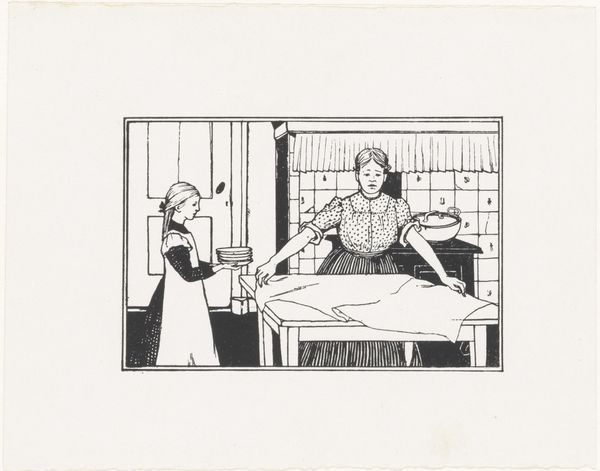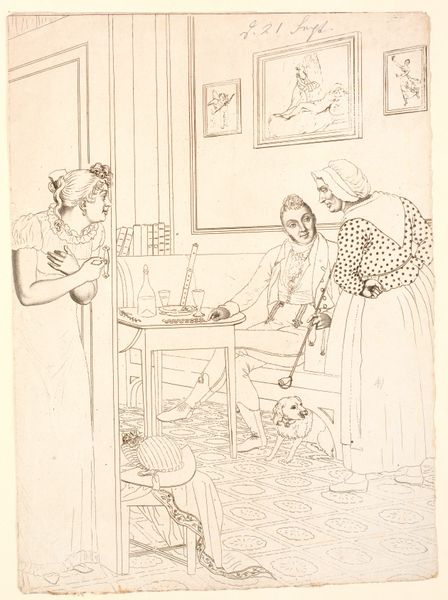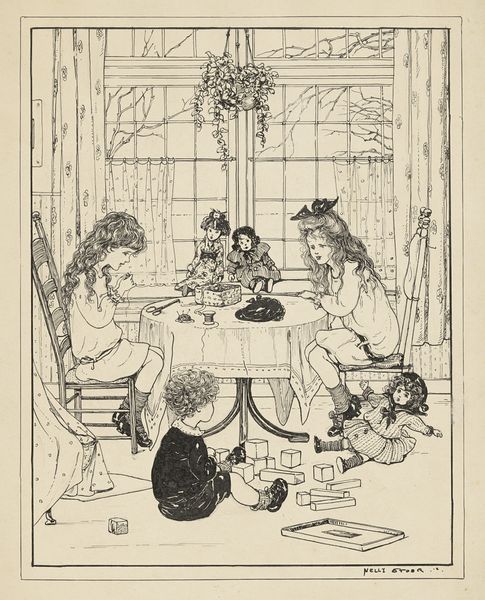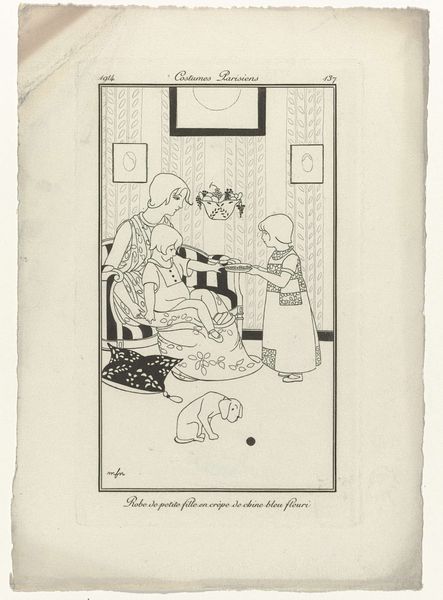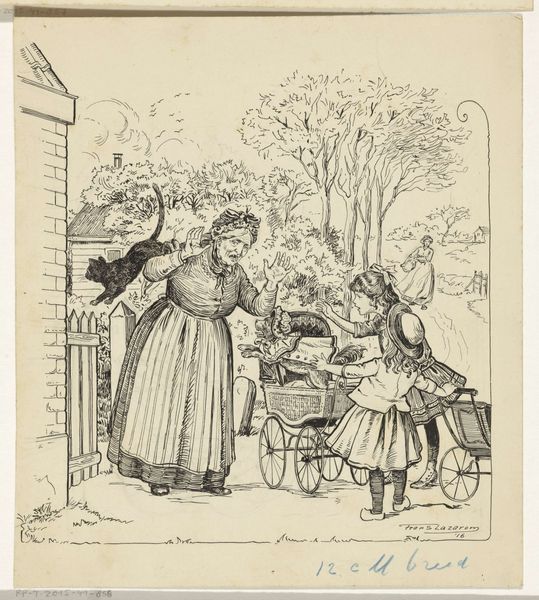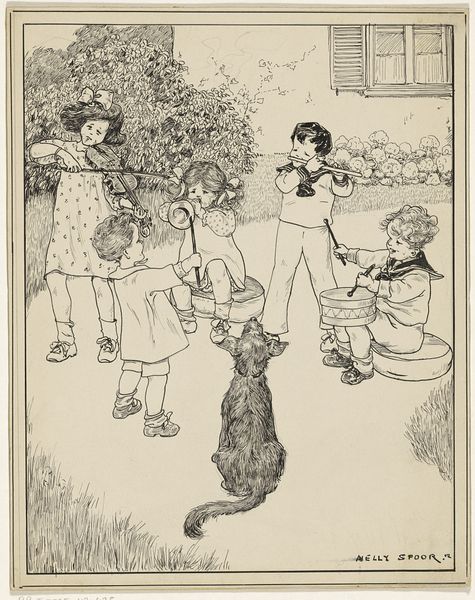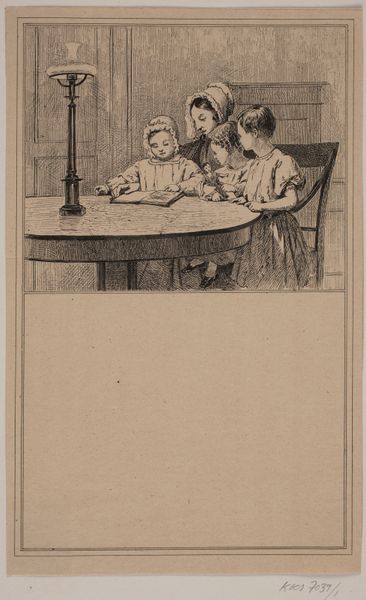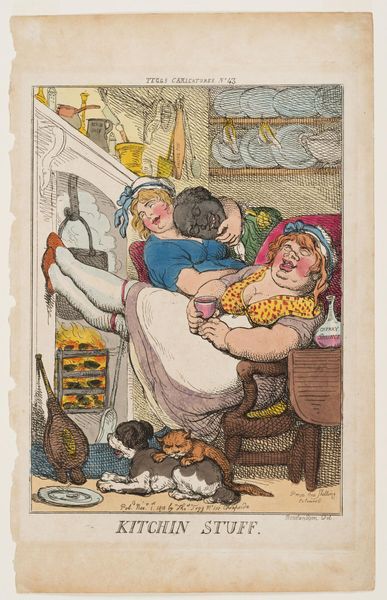
drawing, paper, pen
#
portrait
#
drawing
#
paper
#
child
#
intimism
#
pen
#
genre-painting
Dimensions: height 222 mm, width 175 mm
Copyright: Rijks Museum: Open Domain
Curator: I’m struck by the intricate linework in Nelly Spoor's drawing from 1916, titled "Vrouwen en kinderen met een puppy in een keuken"—Women and Children with a Puppy in a Kitchen. It’s deceptively simple. Editor: It certainly is—the first impression is one of subdued domesticity. The light is so flat, so evenly distributed across the scene. And such an economical use of line to define the shapes. Curator: Spoor primarily worked in drawing, and this piece is made with pen on paper, and she manages to depict an entire scene, packed with details. Look closely, and you will see how Spoor captured the details in this turn-of-the-century kitchen. What’s fascinating is the glimpse into the division of labor within the household. The women are engaged in traditionally feminine roles – the servant with childcare and the mother taking care of domestic tasks. Editor: Absolutely, and let's consider the construction of the scene. The composition centers around this visual hierarchy you’re mentioning – the puppy acts as a kind of fulcrum for all their attention. And even formally, the repetition of curved lines—the children's hair, the puppy, the ruffled curtains, the curves of the pots on the shelf—creates a visual harmony. It suggests intimacy, you could call it. Curator: "Intimism" is certainly what we would call it. The kitchen items tell a story, too – the enamelware and specific fixtures are likely mass-produced goods. Understanding who could access these goods tells us much about the audience she was targeting. Also notice the use of line weights! She uses much thinner lines on faces to render her subjects’ gaze even softer and domestic. Editor: You know, despite the detailed interior and the careful distribution of light, the emotional palette remains incredibly contained. The absence of color further dampens any potential for dramatic expression. Do you read this suppression as intentional, almost like an act of social compliance on the part of the women? Curator: That’s insightful; maybe this wasn't just to please consumers, but to express certain artistic boundaries within this genre painting. Thank you for sharing your view. Editor: And thank you for highlighting these aspects of its making and distribution; it really brings this modest work into new focus.
Comments
No comments
Be the first to comment and join the conversation on the ultimate creative platform.
